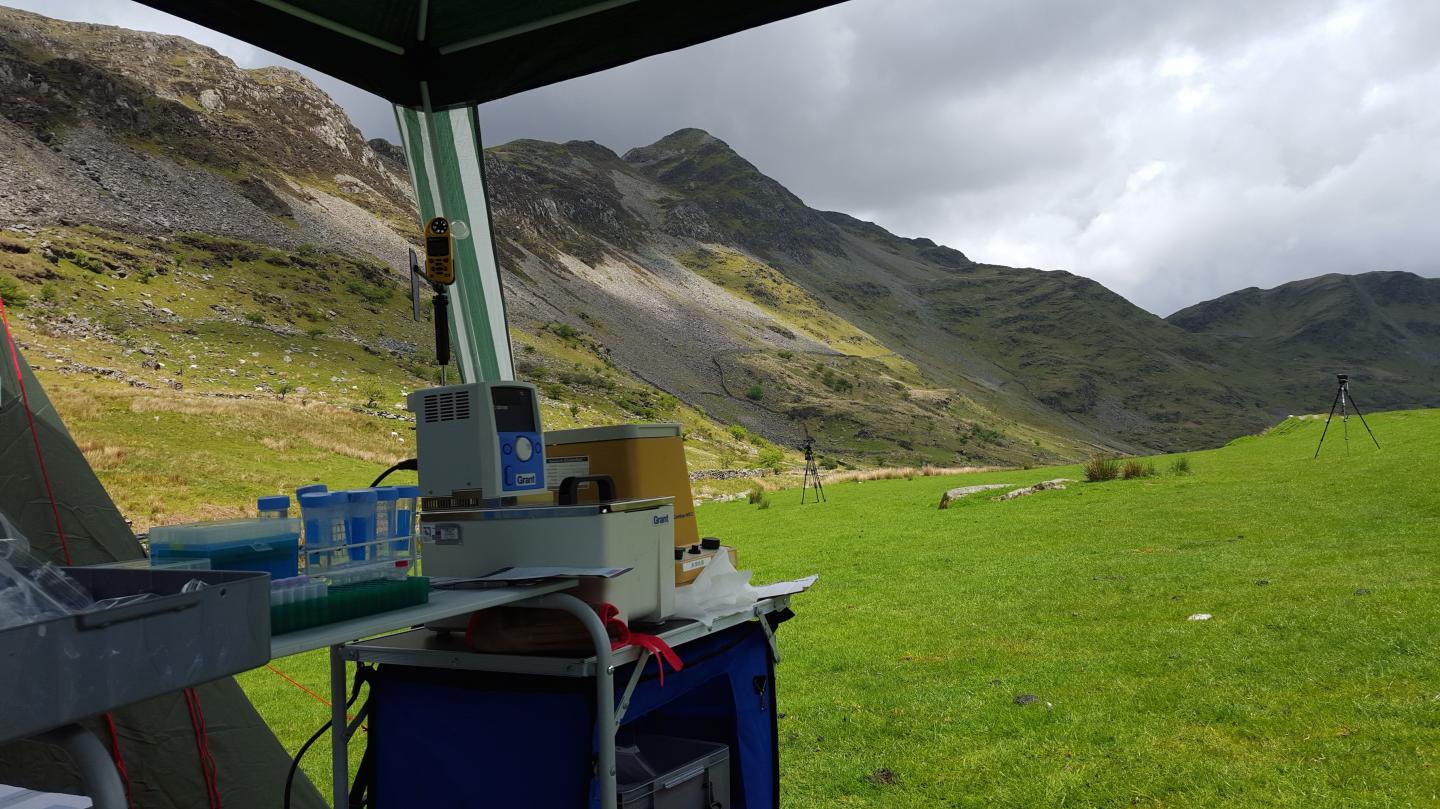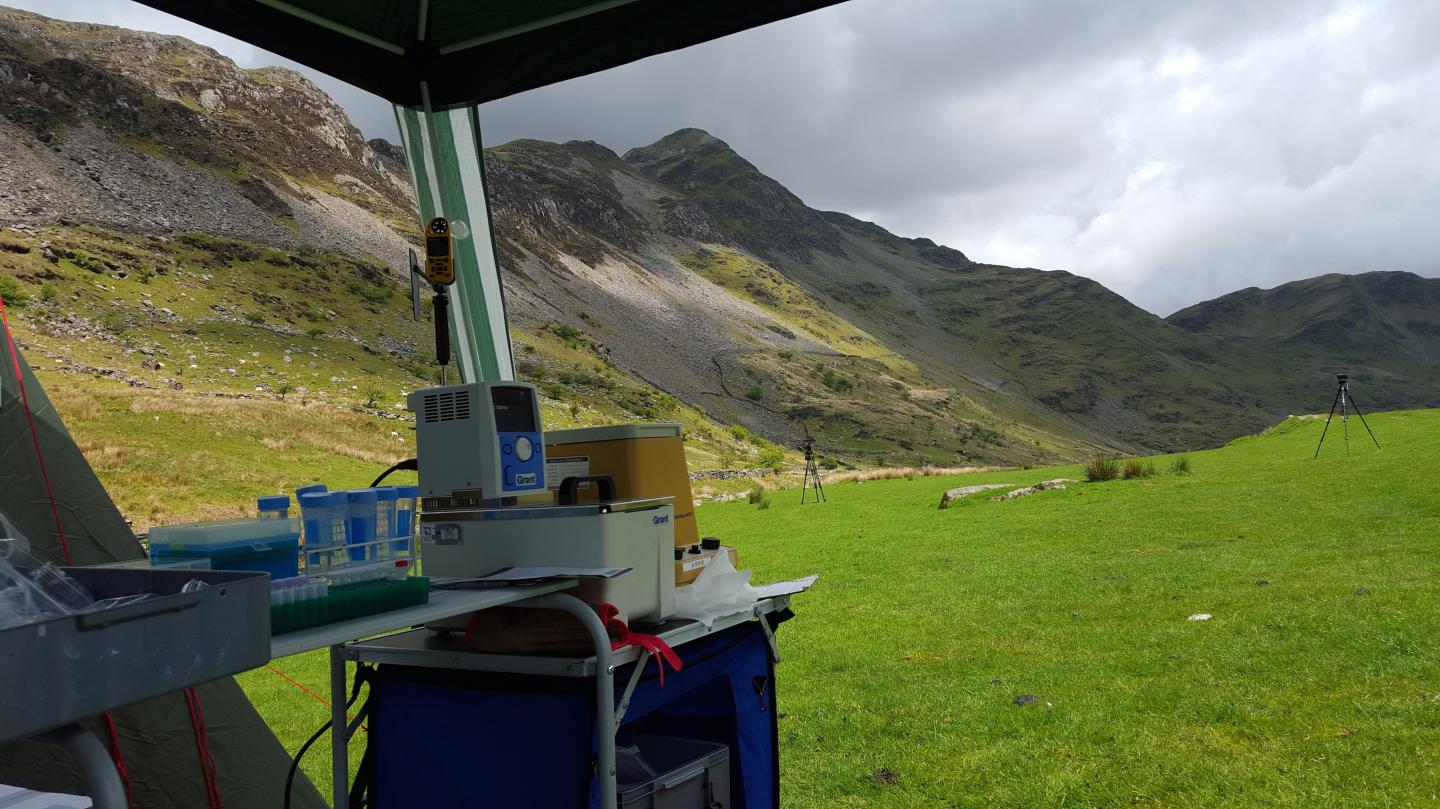
Credit: Alex Papadopolous
In a paper published today in Scientific Reports (Nature Publishing Group), researchers at the Royal Botanic Gardens, Kew, detail for the first time the opportunities for plant sciences that are now available with portable, real-time DNA sequencing.
Kew scientist and co-author of the paper Joe Parker says; "This research proves that we can now rapidly read the DNA sequence of an organism to identify it with minimum equipment. Rapidly reading DNA anywhere, at will, should become a routine step in many research fields. Despite hundreds of years of taxonomic research, it is still not always easy to work out which species a plant belongs to just by looking at it. Few people could correctly identify all the species in their own gardens."
Over the last forty years, DNA sequencing has revolutionised the scientific world but has remained laboratory-bound. Using current methods, a complete experiment to identify a species, from fieldwork to result, could easily take a scientist months to complete. Species identification is, by nature, a largely a field-based area of pursuit, thereby limiting the pace of discovery and decision making that can depend upon it. Using new technology to identify species quickly and on-site is critical for scientific research, the conservation of biodiversity and in the fight against species crime.
In this new study, Kew scientists used the portable DNA sequencer, the MinION from Oxford Nanopore Technologies, to analyse plant species in Snowdonia National Park. This was the first time genomic sequencing of plants has been performed in the field.
This technology, commercially launched in 2015, has since been used in Antarctica, in remote regions affected by disease, and on the International Space Station.
One of the successes illustrated in the paper is the field identification of two innocuous white flowers, Arabidopsis thaliana and Arabidopsis lyrata ssp. petraea. This was achieved by sequencing random parts of the plants' genomes, avoiding the tricky and time consuming process of targeting specific pieces of DNA which is the more traditional approach for identifying species with DNA.
The researchers compared their new data to a freely available database of reference genome sequences to make their identification. Crucially, replicating their experiment in Kew's Jodrell Laboratory with other DNA sequencing methods allowed them to devise sophisticated statistics to understand the useful properties of this new kind of data for the first time.
Alexander Papadopulos, Kew scientist and co-author on the paper, says; "Accurate species identification is essential for evolutionary and ecological research, in the fight against wildlife crime and for monitoring rare and threatened species. Identifying species correctly based on what they look like can be really tricky and needs expertise to be done well. This is especially true for plants when they aren't in flower or when they have been processed into a product. Our experiments show that by sequencing random pieces of the genome in the field it's possible to get very accurate species identification within a few hours of collecting a specimen. More traditional methods need a lot of lab equipment and have often only provided enough information to identify a sample to the genus level."
There are other useful properties of their data too. This field sequenced data can be used to assemble a whole genome sequence, act as a reference database for the species and help understand evolutionary relationships. Currently, the team is exploring the feasibility of rapidly generating a reference sequence database from the incredibly diverse collection of plants help in Kew's living collection and herbarium as well as applications for monitoring plant health.
###
Video of the Welsh experiment here.
For press enquiries or to request an interview please contact the Press Office: +44 (0)20 8332 5607 / [email protected]
Images are available to download, please contact the press office
Research paper details
Article reference: 10.1038/s41598-017-08461-5
Article title: "Field-based species identification of closely-related plants using real-time nanopore sequencing" (SREP-17-26531-T)
Publication – Scientific Reports
Link to the pre-print edition of the paper under strict embargo of 10am BST 16/08/17- http://www.biorxiv.org/content/early/2017/03/14/107656
Link open to public access from 10am BST on 16/08/17 is http://www.nature.com/articles/s41598-017-08461-5
The Royal Botanic Gardens, Kew is a world famous scientific organisation, internationally respected for its outstanding collections as well as its scientific expertise in plant diversity, conservation and sustainable development in the UK and around the world. Kew Gardens is a major international and a top London visitor attraction. Kew's 132 hectares of landscaped gardens, and Kew's country estate, Wakehurst, attract over 1.5 million visits every year. Kew was made a UNESCO World Heritage Site in July 2003 and celebrated its 250th anniversary in 2009. Wakehurst is home to Kew's Millennium Seed Bank, the largest wild plant seed bank in the world. Kew receives just under half of its funding from Government through the Department for the Environment, Food and Rural Affairs (Defra) and research grants. Further funding needed to support Kew's vital work comes from donors, membership and commercial activity including ticket sales.
Media Contact
Ciara O'Sullivan
[email protected]
44-208-332-5605
@kewgardens
http://www.kew.org
Related Journal Article
http://dx.doi.org/10.1038/s41598-017-08461-5





